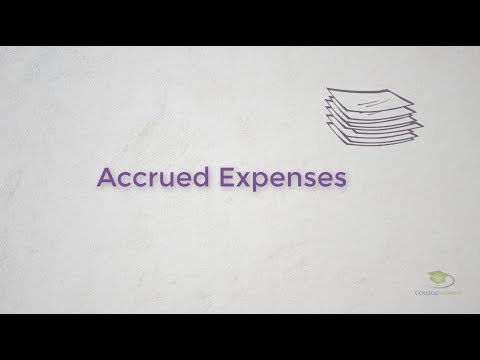Compound Interest Calculator Daily, Monthly, Yearly Compounding

The concept of interest can be categorized into simple interest or compound interest. Total Deposits – The total number of deposits made into the investment over the number of years to grow. You may also be interested in the credit card payoff calculator, https://www.business-accounting.net/accounting-for-photographers-accounting-basics-for/ which allows you to estimate how long it will take until you are completely debt-free. It is also worth knowing that exactly the same calculations may be used to compute when the investment would triple (or multiply by any number, in fact).
Alternate Calculations

With more than 15 years of experience crafting content about all aspects of personal finance, Michael Benninger knows how to identify smart moves for your money. His work has been published by Intuit, Insider and the Los Angeles Times, and he’s been quoted by The Street and Yahoo Finance among other news outlets. Prior to his role at Forbes Advisor, Michael worked as a banking writer for Finder.com, where he authored in-depth reviews of hundreds of banking products. For instance, we wanted to find the maximum amount of interest that we could earn on a $1,000 savings account in two years. By using the Compound Interest Calculator, you can compare two completely different investments.
How to calculate annual percentage yield
Beginning Account Balance – The money you already have saved that will be applied toward your savings goal. Expectancy Wealth Planning will show you how to create a financial roadmap for the rest of your life and give you all of the tools you need to follow it. Here you can set how often the interest is added to (capitalized on) your balance (principal). After setting the above parameters, you will immediately receive your exact compound interest rate. Note that when doing calculations, you must be very careful with your rounding.
Find out how your investment will grow over time with Compound Interest
Please use our Interest Calculator to do actual calculations on compound interest. Compound interest takes into account both interest on the principal balance and interest on previously-earned interest. Simple interest refers only to interest earned on the principal balance; interest earned on interest is not taken into account. To see how compound interest differs from simple interest, use our simple interest vs compound interest calculator.
Understanding the Basic Compound Interest Formula
It’s not the ability to perform calculations by hand that’s important; it’s the understanding of financial concepts and how to apply them using these handy calculating tools that were invented. Our web-based financial calculator can serve as a good tool to have during lectures or homework, and because it is web-based, it is never out of reach, as long as a smartphone is nearby. The inclusion of a graph and a schedule, two things missing from physical calculators, can be more visually helpful for learning purposes. Start by entering your initial deposit or investment, or your current balance if you already have a deposit.

Premium Investing Services
The effective annual rate (also known as the annual percentage yield) is the rate of interest that you actually receive on your savings or investment after compounding has been factored in. Depending on their credit card terms, that means that 44 percent of cardholders could be getting charged interest on their purchases from month to month. Understanding how this interest is calculated can help you plan for the times you might have to carry a balance — or even avoid carrying one altogether. The Rule of 72 is a shortcut to determine how long it will take for a specific amount of money to double given a fixed return rate that compounds annually.
Banks generally provide saving accounts with yearly capitalization of the interest while investments in stocks that pay a dividend have yearly, quarterly or monthly payments. To compare bank offers that have different compounding periods, we need to calculate the Annual Percentage Yield, also called Effective Annual Rate (EAR). The most comfortable way to figure it out is using the APY calculator, which estimates the EAR from the interest rate and compounding frequency. Your credit card what is restricted cash on financial statements balance fluctuates throughout a billing cycle based on new purchases or returns, any fees you’re assessed (such as foreign transaction fees), as well as any mid-cycle payments you make. If your credit card issuer uses a compounding interest formula to assess interest (as most of them do), your daily balance will also include any interest accrued from the prior day’s balance. PMT or periodic payment is an inflow or outflow amount that occurs at each period of a financial stream.
Compound interest can also work against you when you have to pay it. So you may pay interest on your interest if you carry a balance from month to month. The compound interest rate lenders charge is usually expressed as an annual percentage rate (APR). The compound interest formula is an equation that lets you estimate how much you will earn with your savings account. It’s quite complex because it takes into consideration not only the annual interest rate and the number of years but also the number of times the interest is compounded per year.
- Have you ever wondered how many years it will take for your investment to double its value?
- Compound interest is defined as the interest earned on a loan or investment that comes from both the initial principal and the accumulated interest.
- Compound interest is calculated by multiplying the initial principal amount by one plus the annual interest rate raised to the number of compound periods minus one.
- In this example you earned $1,000 out of the initial investment of $2,000 within the six years, meaning that your annual rate was equal to 6.9913%.
You’ve selected an index fund that you believe will grow at 8% each year. While most people will use the default formula to calculate the expected result of compound interest, several other formulas are available. Our partners cannot pay us to guarantee favorable reviews of their products or services. Many of the features in my compound interest calculator have come as a result of user feedback,so if you have any comments or suggestions, I would love to hear from you. Let’s cover some frequently asked questions about our compound interest calculator.
Compounding interest is the most basic example of capital reinvestment. More frequent compounding periods means greater compounding interest, but the frequency has diminishing returns. This example shows the interest accrued on a $10,000 investment that compounds annually at https://www.simple-accounting.org/ 7% for four different compounding periods over 10 years. With savings accounts, compound interest works by continually adding interest you earn to the funds you’ve deposited. Different banks add—or compound—interest at different rates, known as the compounding frequency.
For this reason, lenders often like to present interest rates compounded monthly instead of annually. For example, a 6% mortgage interest rate amounts to a monthly 0.5% interest rate. However, after compounding monthly, interest totals 6.17% compounded annually. Compound interest is a form of interest calculated using the principal amount of a deposit or loan plus previously accrued interest. Unlike simple interest, which doesn’t apply to previously accrued interest, compound interest allows your money to grow exponentially over time. Use the compound interest calculator below to determine how much interest you can earn in a savings account.
